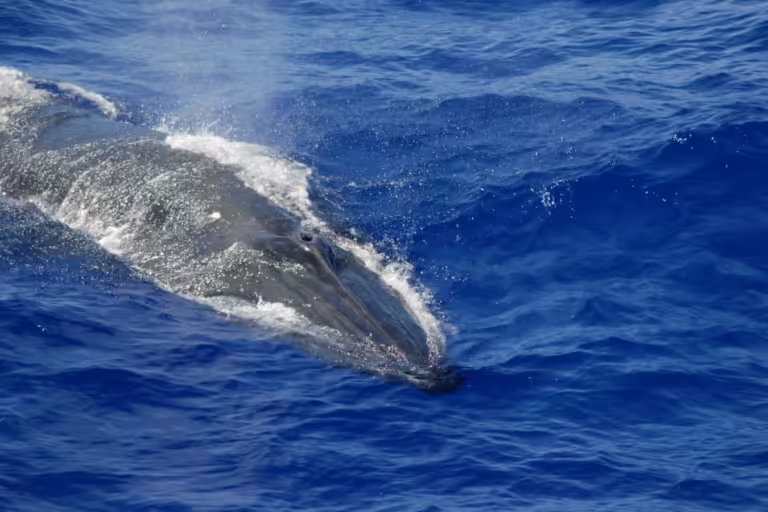
Bryde’s whale surfacing for air
NOAA Fisheries
Mysterious sounds coming from the depths of the Pacific Ocean have finally been identified as coming from a Bryde’s whale, and now artificial intelligence is helping researchers track down the elusive whale species that caused the sounds.
The mystery began in 2014, when researchers recorded a moaning-like sound, followed by a metallic clang, above the Mariana Trench. “You wouldn’t think that was an animal. You would think that it was a ship or the (US) Navy,” says Anne Allen of the National Oceanic and Atmospheric Administration (NOAA).
Years later, additional recordings of this sound, which researchers call biotwang, were eventually linked to Bryde’s whale sightings.Flesh-eating macaque) in the Mariana Islands.
Bryde’s whales are large baleen whales that filter large amounts of krill and fish from the water, but are rarely spotted because they are nearly constantly on the move. Allen discovered similar biotwang sounds in more than 180,000 hours of underwater recordings from NOAA’s network of hydrophones installed on the bottom of the Pacific Ocean, and saw an opportunity to track the migrating Bryde’s whales.
“Discovering new animal call species, which often occur out of sight of humans, is important because their presence can be detected using passive acoustic monitoring,” says Caroline Casey of the University of California, Santa Cruz.
Sifting through audio recordings by hand would be impractical, so Allen teamed up with Google researchers who were developing an AI model to automatically identify the calls of multiple whale species. Google trained the AI to classify different patterns in spectrogram images, which are a visual translation of sound.
The AI was able to identify the calls by comparing them to training data — a bit like the music identification app Shazam. The AI managed to identify the calls of eight whale species: humpback whales, blue whales, fin whales, North Pacific right whales, North Atlantic right whales, minke whales, killer whales, and Bryde’s whales. You can hear one of them below.
!(endif)–>
The team also found that biotwanging occurs most frequently in a specific population of Bryde’s whales in the western Pacific. The call patterns also suggest that the whales may be tracking the movement of the boundary between warm and cold waters. This area, called the transition chlorophyll front, is densely populated with plankton and other food organisms that act as a moving buffet for the whales.
“As climate change progresses, El Niño and La Niña events are expected to become more frequent and more extreme, and this transition zone chlorophyll front is expected to move further north and become more variable,” Allen said. “This means that whales may have to travel farther and work harder to find food, which could impact the health of whale populations.”
topic:

